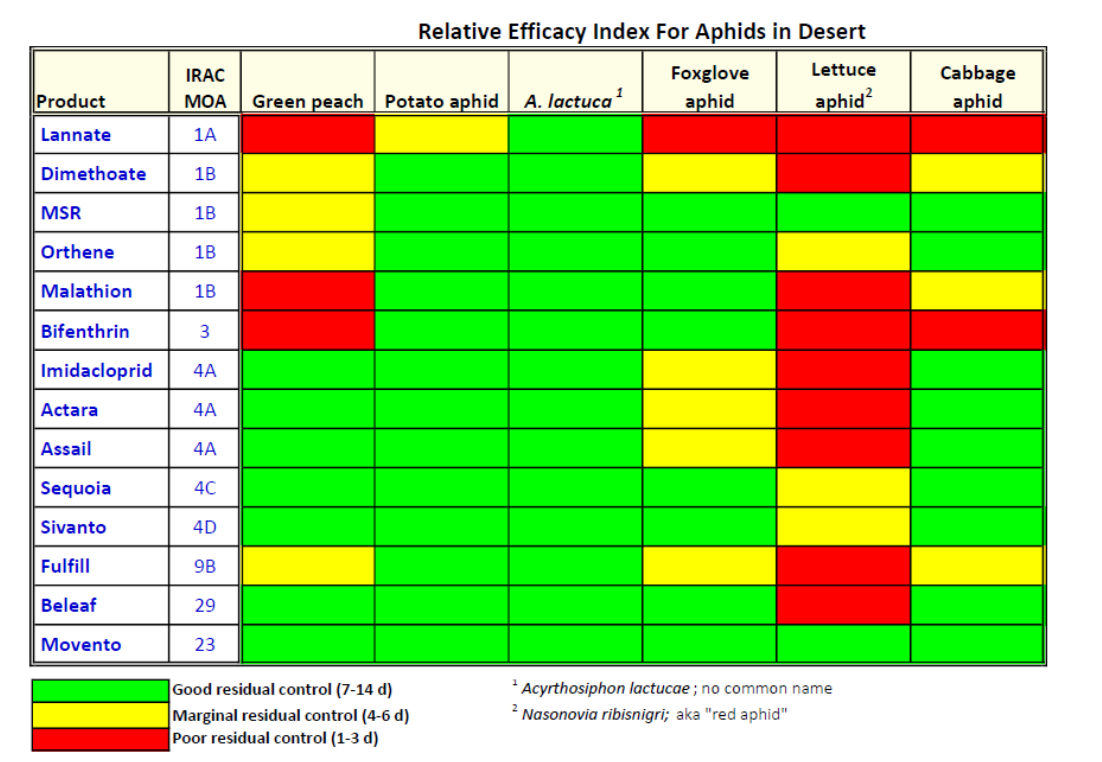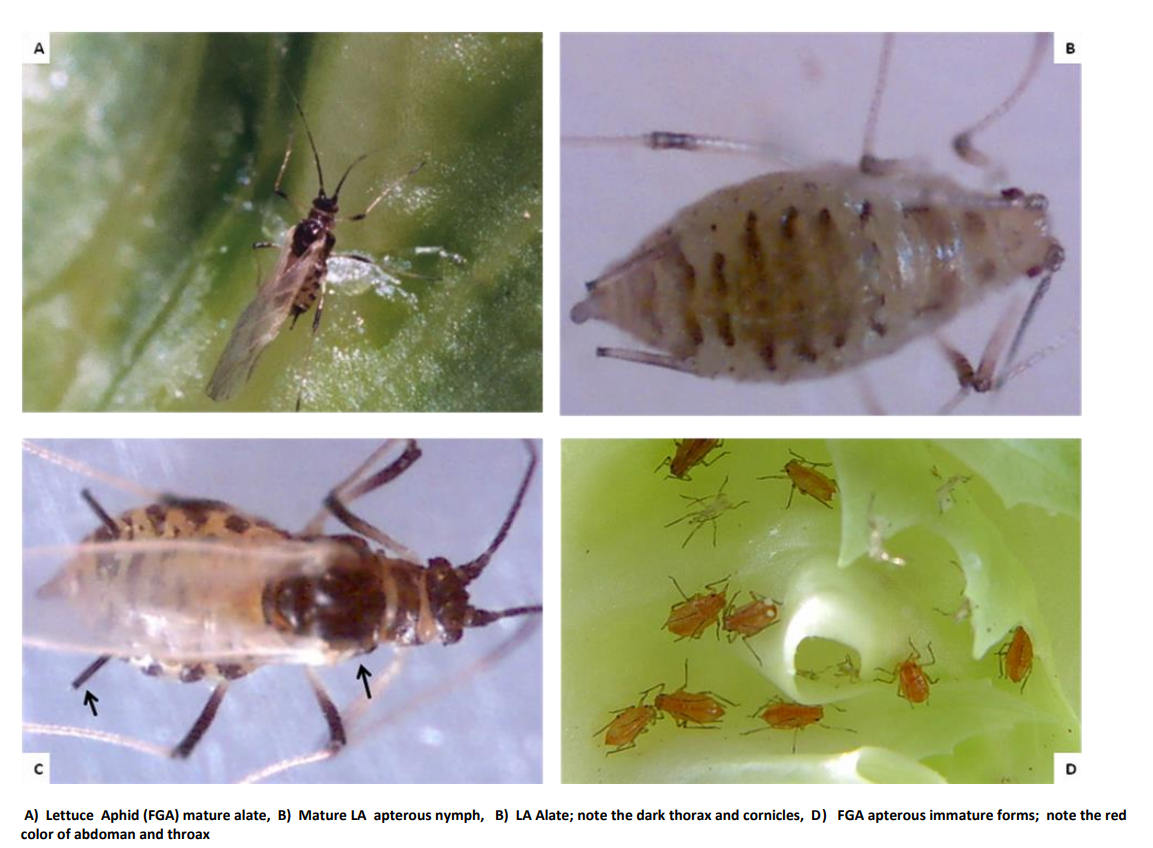Description and Seasonal Development
Very little information on the Lettuce Aphids (LA) biology under desert conditions has been reported. However, LA appears to be most reproductively active when average temperatures are above 60 °F. They have a very short lifecycle (~8-10 days) and populations can build up rapidly. Under mild-winter temperatures, LA can be present on lettuce throughout the winter and spring crops. The nymphs are comparatively large and can take on different color forms, ranging from red to pink to brown. Adults, both apterous and alate are usually brown with a dark head and thorax. Extensive black markings can be found on adult, often including dark cornicles, dark bands across the abdomen, and dark bands on the legs. The antennae and cornicles are long in LA, and the legs are quit spindly giving it a spider-like appearance. A pictorial key for identification of LA is shown in Plates 1 and 2.
Economic Damage:
LA are only found on lettuce crops (iceberg, romaine, butter, leaf), and unlike other aphid species in lettuce, the adults tend to deposit live nymphs near the growing point of plants. They continue to feed and reproduce deep within the plant on young newly developing leaves. In head lettuce and romaine, LA is found almost exclusively in developing heads and heart, often well protected under several layers of leaves. They economically damage lettuce as a contaminant, often rendering whole fields unmarketable.
Insecticidal Control
Fields not planted with imidacloprid or thiamethoxam are routinely treated with foliar insecticides upon detection of aphid colonization. Foliar sprays should be applied for aphid control based on a simple action threshold; when an average of 10% of plants has aphid colonies (4 or more immature apterous aphids) present. Plants should be sampled 5-7 days following sprays and retreated if the threshold is exceeded again. Older products such as Orthene (acephate), endosulfan, Metasystox-R, dimethoate, malathion and pyrethroids can provide suppression of aphid populations on lettuce and cole crops with limited residual. Metasystox-R is particularly effective against lettuce aphids but has a restrictive REI and PHI. Repeated applications will probably be necessary, depending on time to harvest and aphid pressure. None of these products provides a quick, rapid knockdown of established aphid colonies and their reentry intervals and pre-harvest intervals vary, depending on rates and crops. After years of extensive use, many of these compounds only provide marginal efficacy against green peach aphid, and it is now common for PCAs to tank-mix the older products together or with a pyrethroid to achieve adequate economic control. VegIPM Update, Vol. 10, No.7 -Apr 3, 2019 Several of the newer products overall offer good residual control of most aphid’s species in leafy vegetables and cole crops, but most are weak against lettuce aphid including Beleaf, Fulfill, Assail and the other foliar neonicotinoids. Sivanto and Sequoia are translaminar insecticides that immediately suppresses the aphid activity and is non-toxic to beneficial insects. However, they are not capable of controlling heavy lettuce aphid infestations within heads, hearts and other protected leaf areas on leafy vegetable crops. Movento is the only aphicide that can consistently control lettuce aphids in lettuce. It is an excellent insecticide for aphid control that provides systemic activity against aphids as a foliar spray. Like the other new compounds, it is slow acting under cool, cloudy weather, and has shown excellent activity against lettuce and foxglove aphids, particularly in warm sunny weather.


For more pictures and charts, download the PDF.

